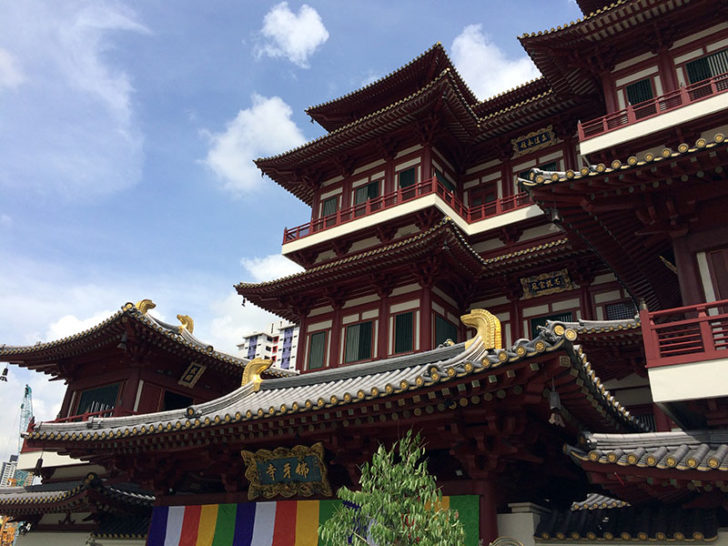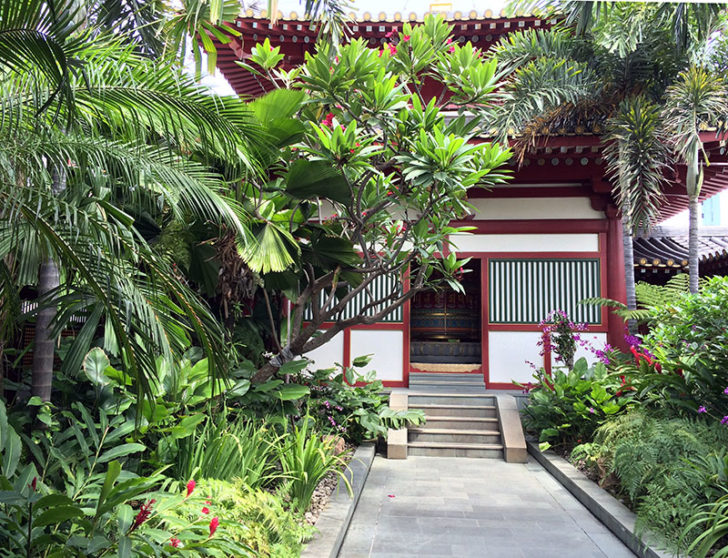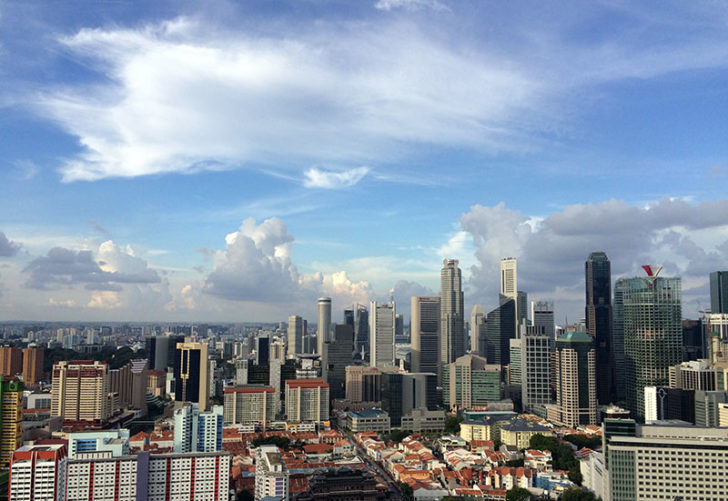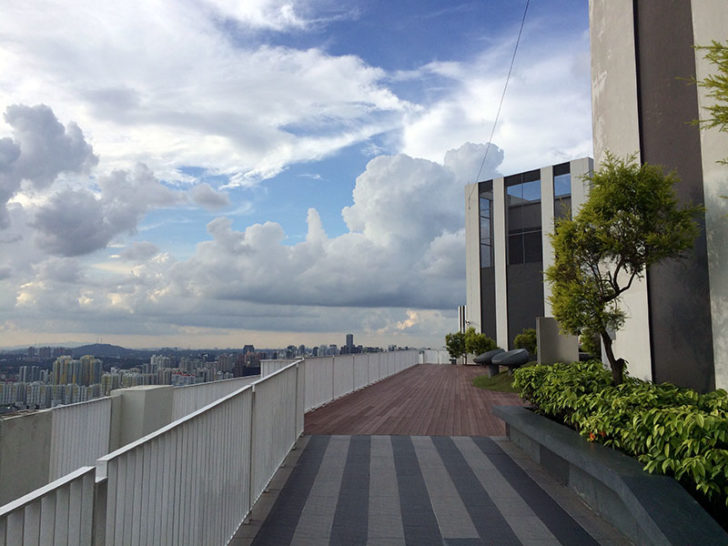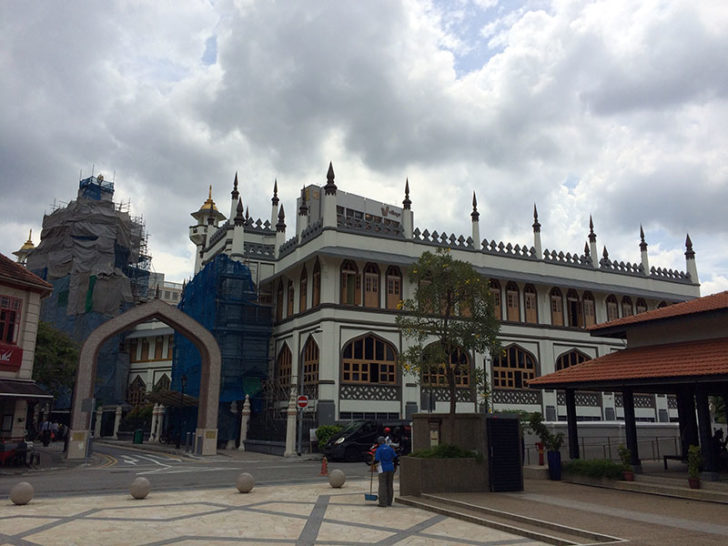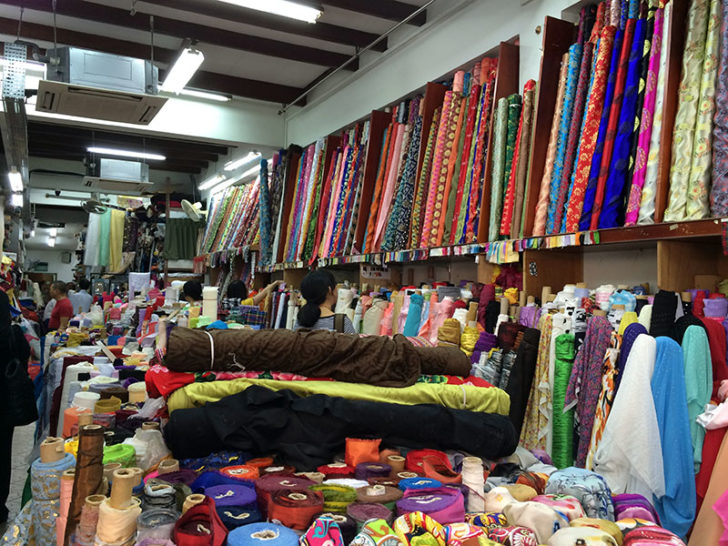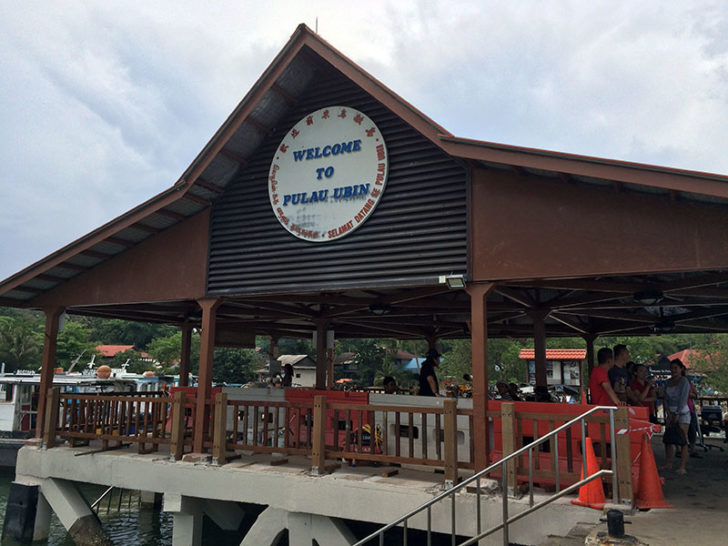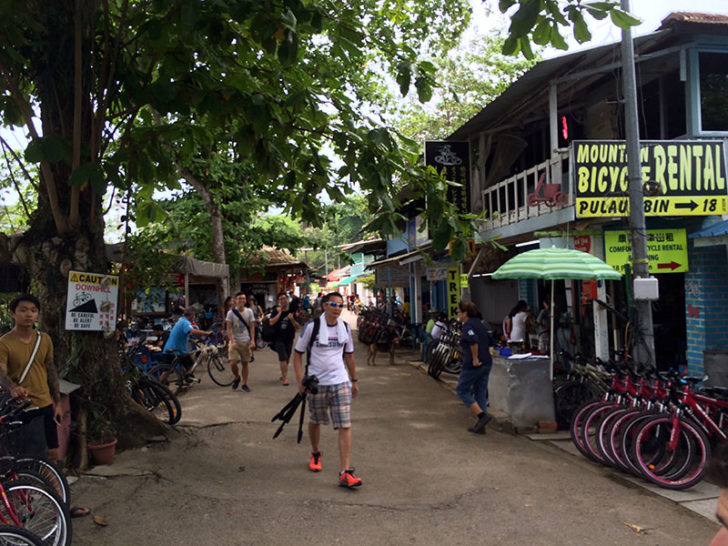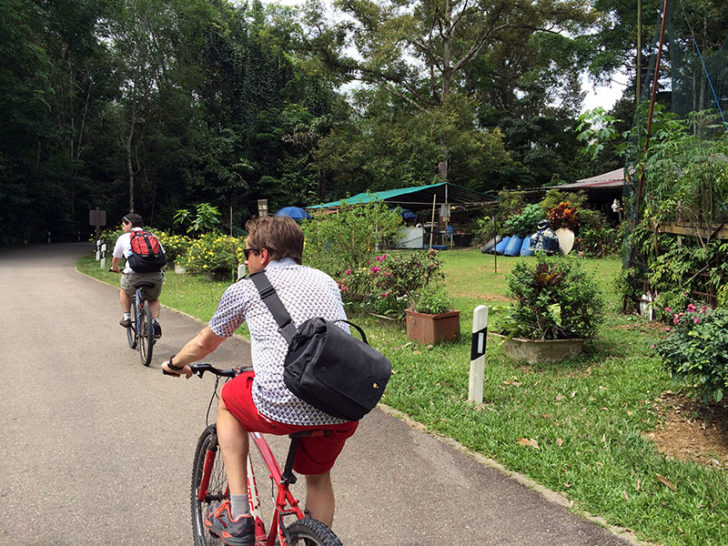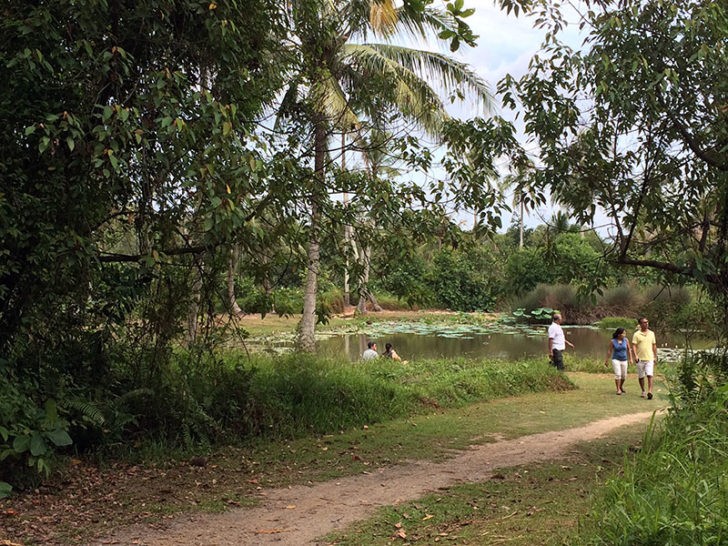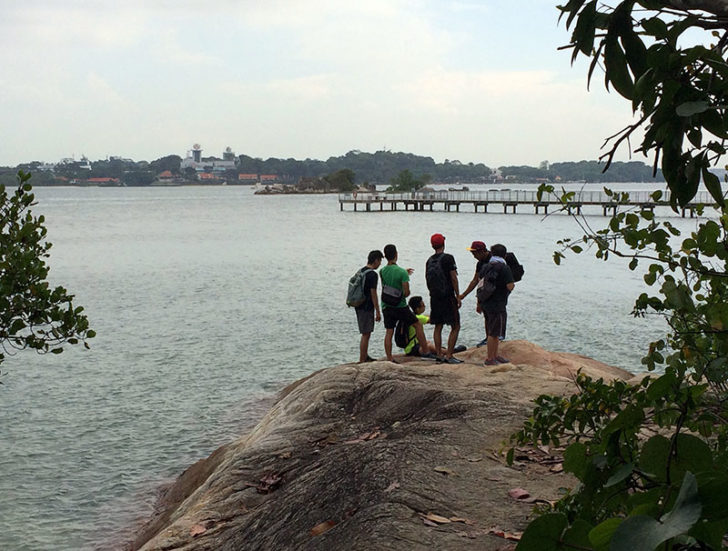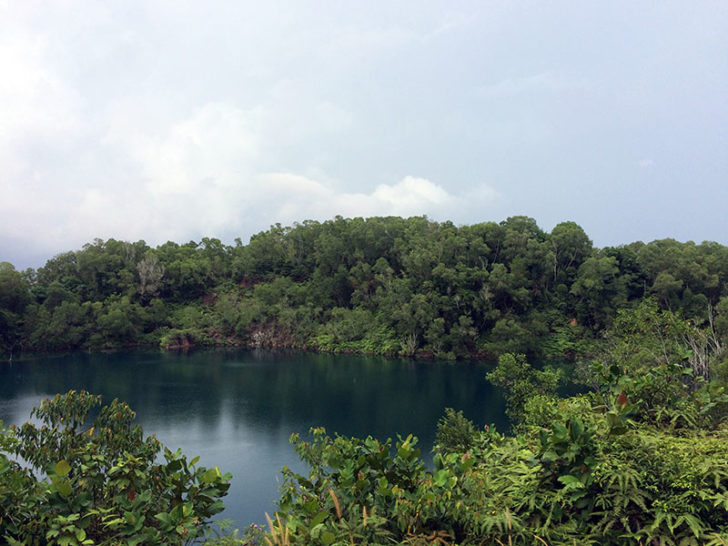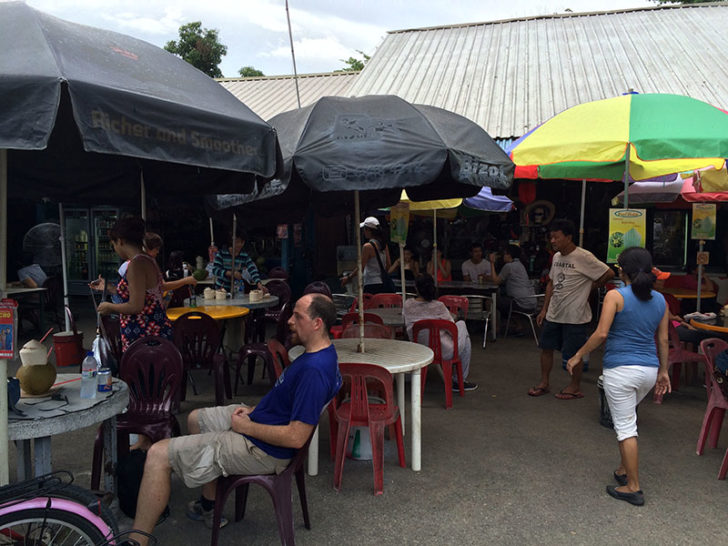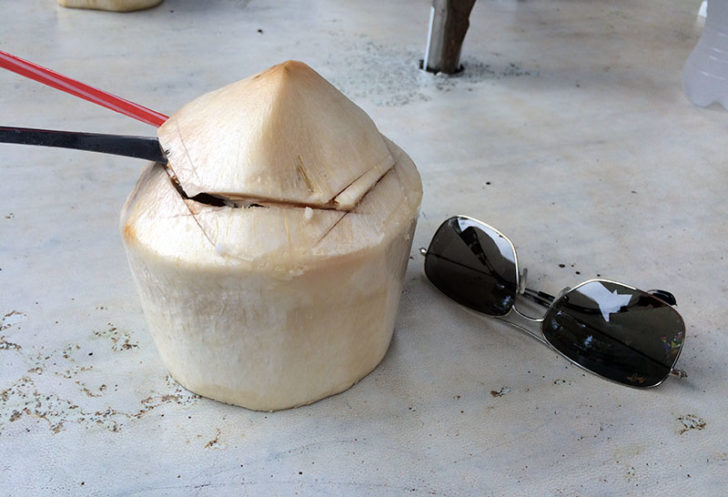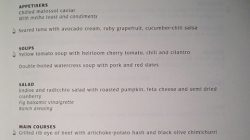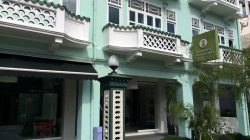One of my favorite things to do in a city is get lost and explore, and Singapore offers a surprising number of opportunities to do this despite its position as a small island nation. Violent crime is almost unimaginable, so you’re safe wherever you go. The booming economy and tropical climate have created some interesting architecture blending skyscrapers and gardens. And the between the hustle and bustle it’s still possible to find some streets that time forgot.
As I mentioned before, my primary motivation for visiting Singapore is that I was enticed by a schedule full of activities I’d never heard of despite two previous visits in the last three years. Here are some of my favorite activities from the trip. Not all will be prominently listed in the top 10 slideshow on your average travel website, but they are definitely worth your consideration.
Buddha Tooth Relic Temple and Museum
If you’ve been to Singapore before you’ve probably seen this — a large multi-storied temple at the end of Chinatown. You probably peeked in and saw the worshippers inside before continuing on your walking tour. I know I did on my first trip.
This time I paid closer attention and learned there’s a free museum on the upper floors and a beautiful rooftop garden. The difference was night and day compared to the traffic at street level. If you want a cool, quiet place to relax. Take the elevator and stairs up to the top.
The Pinnacle @ Duxton
Singapore’s Housing and Development Board (HDB) is responsible for the construction of public housing in the city-state, but that has an entirely different meaning from what you’re used to in America. Roughly 90% of Singaporeans own their own homes. HDB was created to build affordable housing for the poor but in recent years has expanded upmarket as the economy and demand continue to grow. Although there is private development, HDB continues to be a major force.
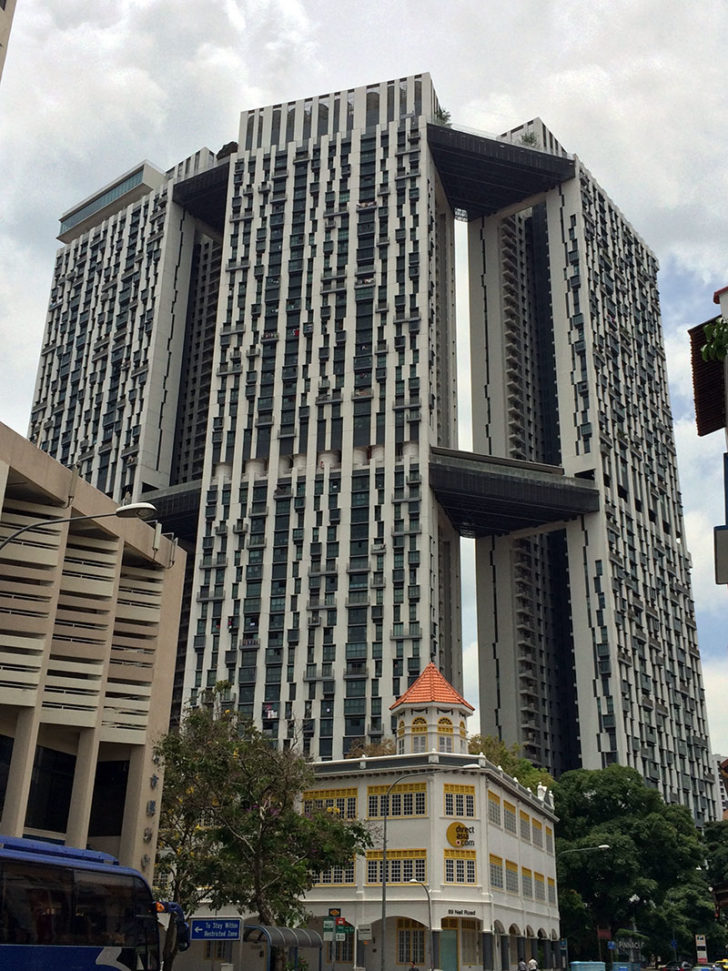
The Pinnacle @ Duxton is a complex of seven 50-story towers that are interconnected by a meandering rooftop deck, as well as smaller parks at the 25th floor. And they’re open to the public, offering one of the best — and cheapest — views of the city. Entry is just $5 SGD (about $3.70 USD), and the main entrance can be found on Cantonment Road in Tower G.
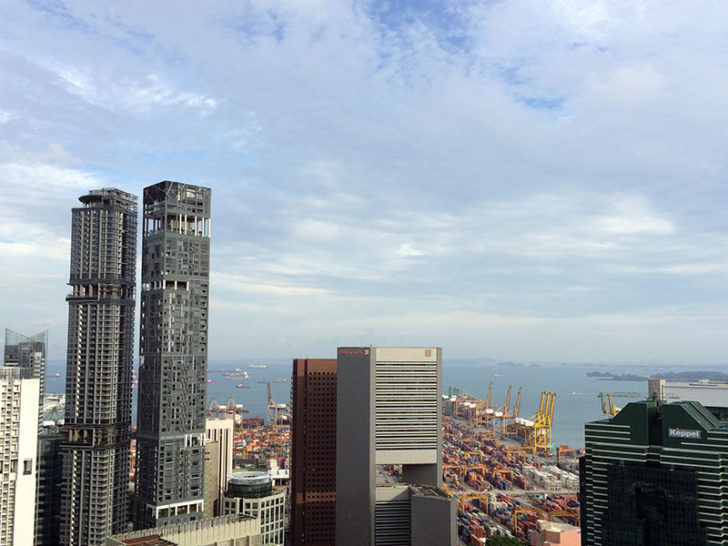
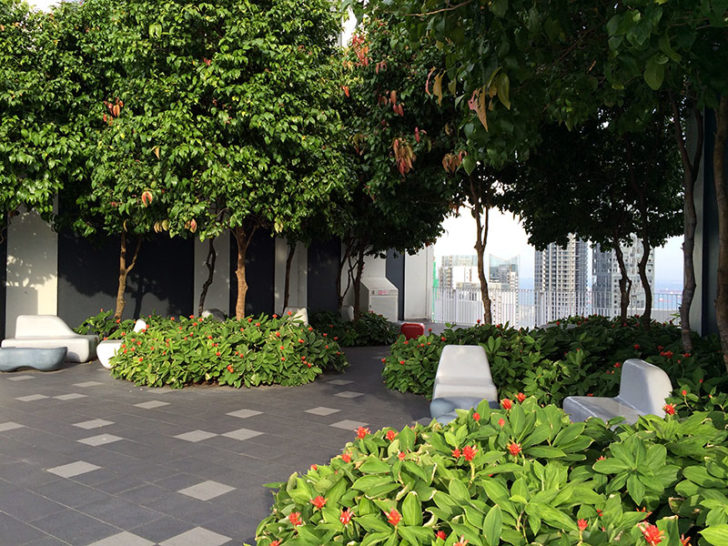
Shopping in the Arab Quarter
There are many ethnic neighborhoods in Singapore, originally established by founder Sir Stamford Raffles, who believed that having a place of one’s own would help avoid fights between the different residents. They blend together much more today, but each still has a distinct character.
One of my favorites is the Arab Quarter, also known as Kampong Glam for the village that used to be there when Raffles arrived. We had lunch one day at Mamanda, adjacent to the former palace (istana) of the sultan who granted the Raffles permission to establish a colony and which now serves as the Malay Heritage Center.
But walking around the neighborhood you’ll find it has been extremely well preserved, and the area looks completely different from the rest of the city that exists today. The large mosque is an impressive sight, although it was under renovation during this visit. There is also lots of shopping, particularly for textiles, and some of the narrowest streets in the city.
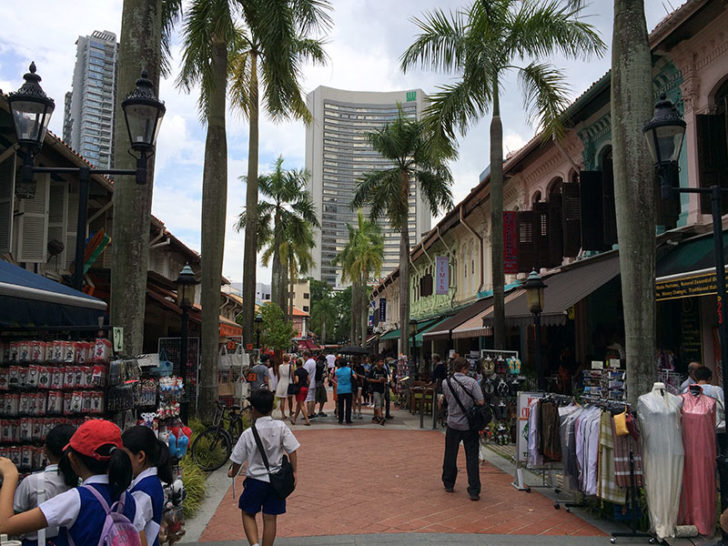
Despite some modernization, you’ll still see signs of the local culture. Literally. There are signs everywhere promoting temperance even as the encroaching city leads to more bars and restaurants opening nearby.
Pulau Ubin
The best experience on my visit to Singapore came on our final day, when a few of us took a ferry to Pulau Ubin, a smaller off-shore island that was formerly a gravel quarry. You can catch a boat from Changi Village for a few dollars, not far from the Changi Village hawker center.
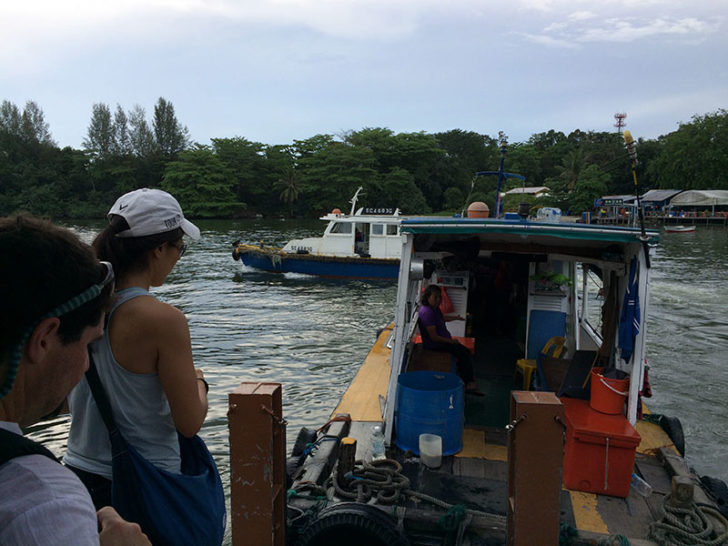
There are few cars on the island, and most people visit for the day to rent a mountain bike or just walk along the paths. You may need to poke around to find one to your liking. The first two bikes I got were duds. Eventually I found one that was adequate — but it kept slipping gears when I went up steep hills. Fortunately the others had better luck.
Eventually the paved road gave way to dirt paths and dense vegetation.
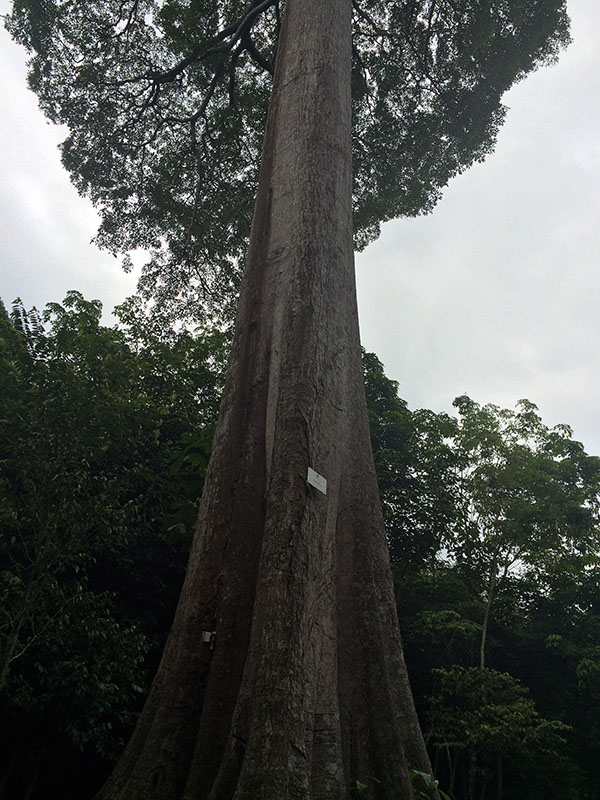
We were a little concerned about the weather since according to this detailed guide, Pulau Ubin is not a good place to be when there are thunderstorms. But fortunately this tree had a lighting meter attached, telling us it had only be struck five times. Is that low? We didn’t stick around to find out, continuing on toward the Chek Jawa Wetland. This is only a mile or so from the ferry and walkable if you don’t want to ride a bike — but the island is much bigger for those who do.
We left our bikes to the care of a family of feral pigs (you can see one of the many piglets behind the bike wheel) and walked to a nearby outcropping of rocks, which offers a great vantage for plane spotting. I took some awful pictures with my phone, but I could identify different carriers and aircraft.
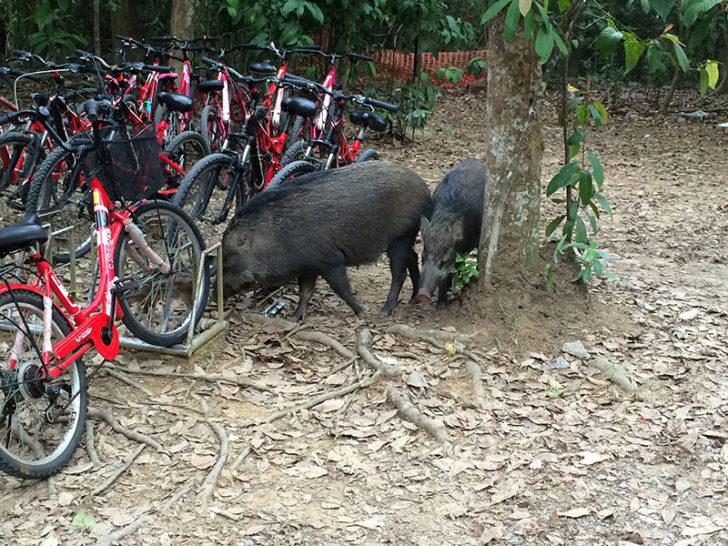
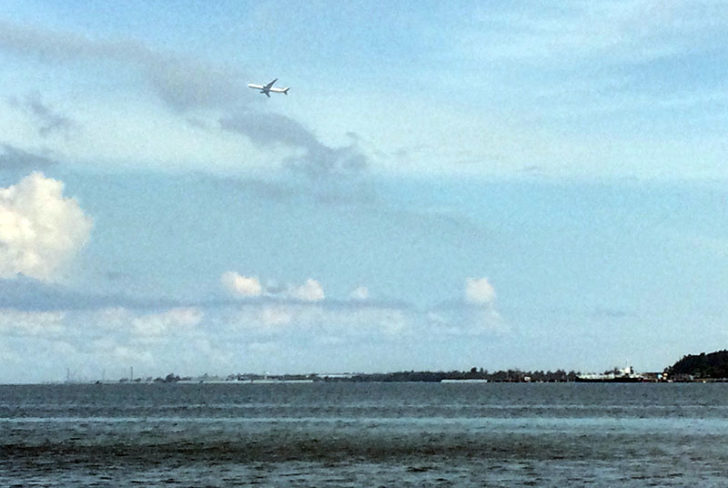
We then continued up and down the hills, past some pristine reservoirs created by the quarries.
Remember to stop for refreshment on your way back! As you re-enter the small town there are a few markets selling snacks and drinks. We went to an open air bar with beer and fresh coconuts. The old woman with the machete looked like she was about to chop off her finger with every swing. I’m glad she didn’t because it was one of the best coconuts ever, and I totally earned it after my afternoon of mountain biking in Singapore.
Full Disclosure: Singapore Tourism Board provided air and ground transportation, accommodation, meals, and a guide during my visit to Singapore. I received no other compensation, and STB did not review or recommend specific content prior to publication.

